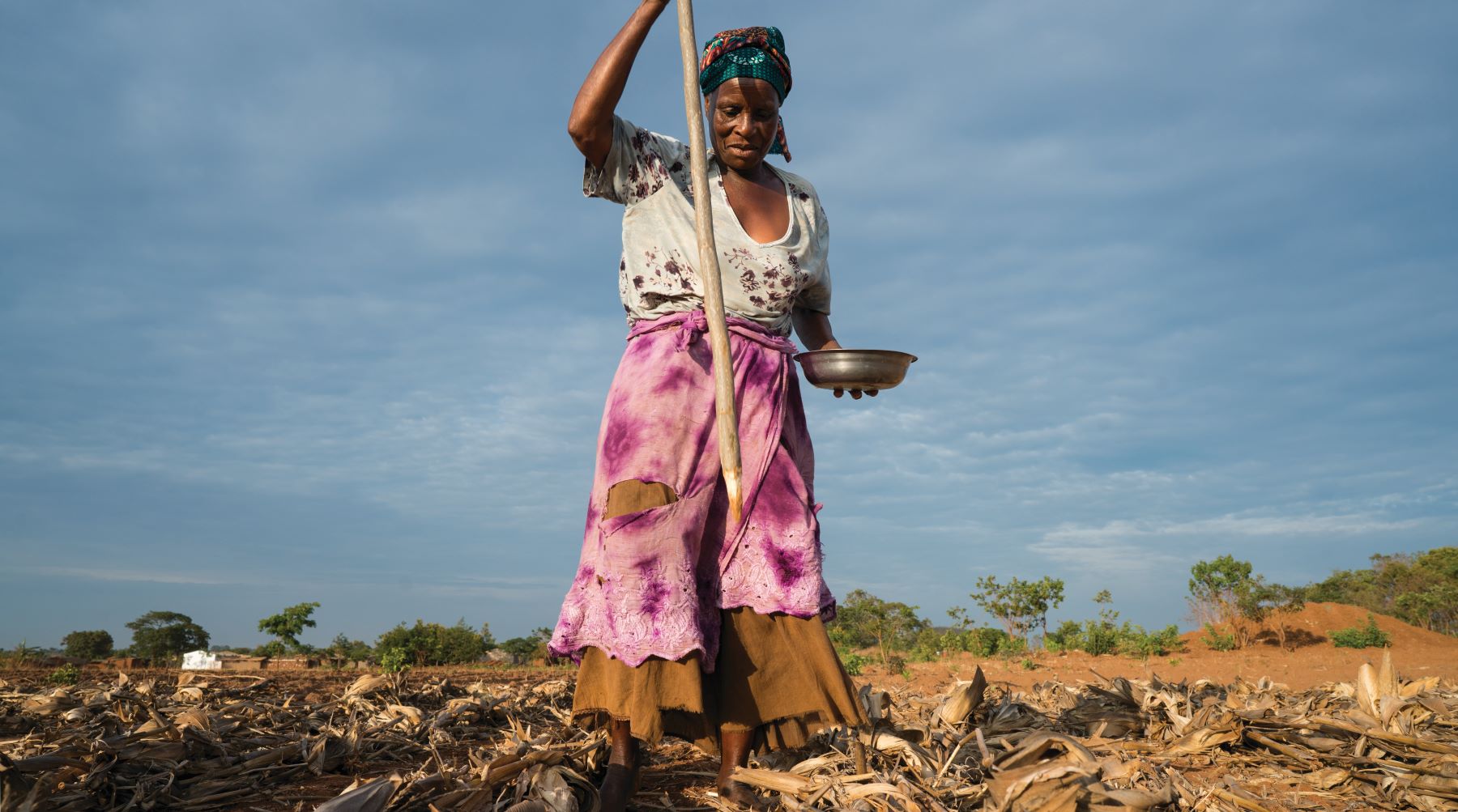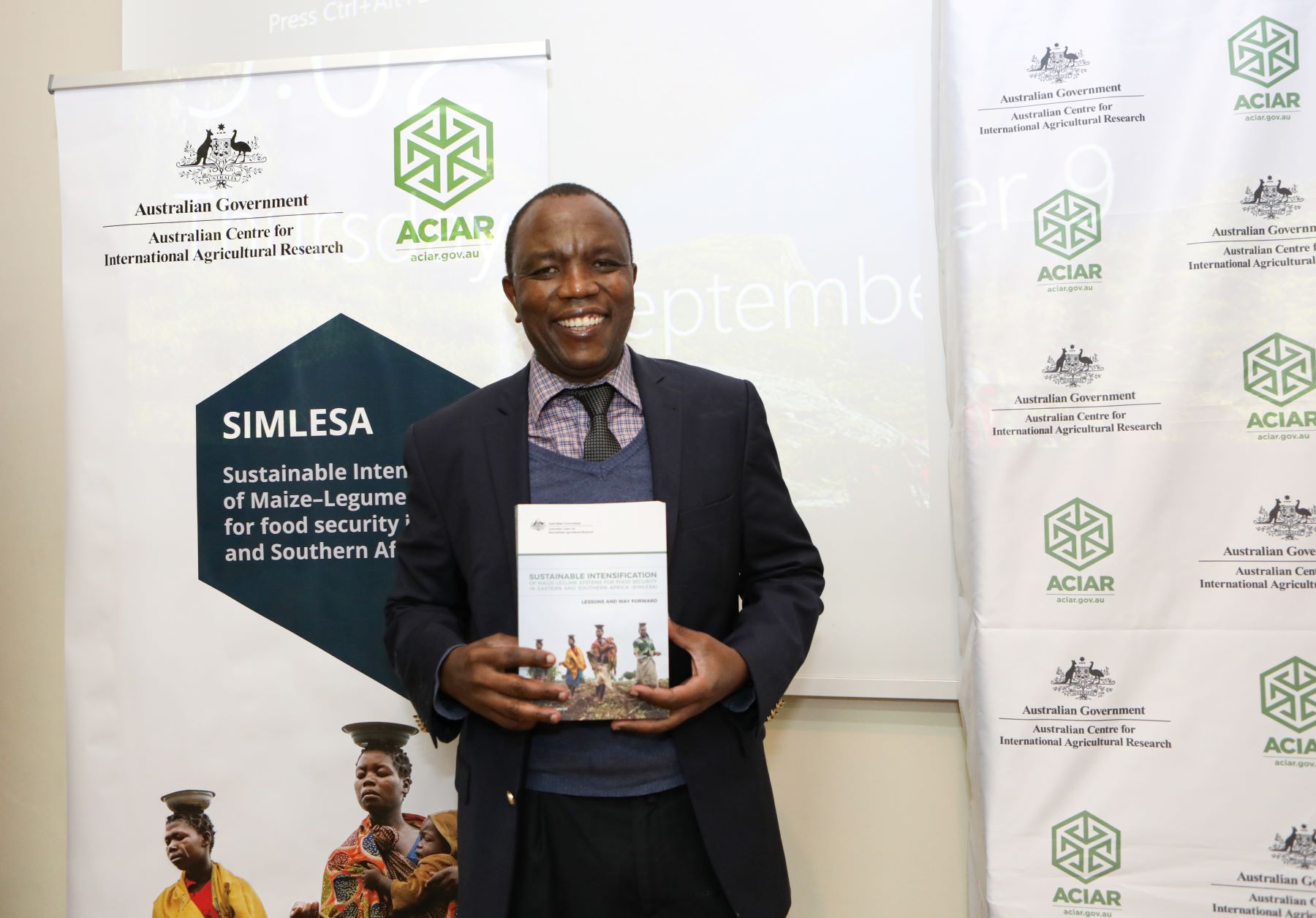In 2019, Ms Dailess Kasawala was voted by her peers as the best smallholder female farmer in Malawi. Her win in the national competition was part of activities organised through the ACIAR-supported Sustainable Intensification of Maize-Legume Cropping Systems for Food Security in Eastern and Southern Africa (SIMLESA) project.
Then aged 71, Ms Kasawala had introduced conservation agriculture (CA) practices taught through SIMLESA. By retaining crop residues and introducing soya bean to her 4-acre maize enterprise, she had reduced her physical labour load, improved soil health and increased yields and profits.
'Fortunately, I find that due to modern methods of farming I am learning, the work is not too hard. Even though I am an elderly woman, I can plant something and rest assured that I will get some food,' said Ms Kasawala at the time.
Today, Ms Kasawala is one of more than half a million smallholder farmers across 7 eastern and southern African countries who have benefited from the $40 million ACIAR-supported SIMLESA project.

The project began in 2010 with a focus on Ethiopia, Kenya, Malawi, Mozambique and Tanzania. Initiatives later expanded into Rwanda and Uganda.
Across its 9-year tenure, the SIMLESA project saw an 8-fold increase in the number of farmers employing CA techniques - from 4% to 35%. This provided an estimated economic return of $4 for every $1 invested.
Five years after the project ended, adoption of practices such as zero or minimum tillage and diversifying maize systems with legumes and mulching continue to expand. Along with this have been increasing economic, social and environmental benefits both on-farm and across the supply chain.

Momentum through connection
Project leaders said SIMLESA's momentum was driven largely by connections made within communities, between researchers and farmers, across supply chains and among institutions responsible for agricultural development.
The Malawi best farmer competition, for example, was an initiative designed to bring together farmers, extension officers and policymakers to share their work, build understanding and form new relationships.
'We wanted to show the farmers how the information they gave us influenced policy,' said Ms Grace Timanyechi Munthali-Kidgell, who led the SIMLESA project in Malawi. 'The idea was that the farmers would go home and spread the word to their fellow farmers.'
Recent data indicates the success of this strategy. In Malawi, SIMLESA technologies are now being used by more than 292,000 farmers. This is nearly 3 times more than the 100,000 farmers reached as part of the project.
Ms Munthali-Kidgell said networks were strengthened by activities such as exchange programs, where farmers visited each other's villages for peer-to-peer learning - a model that also encouraged adoption.
In the project's final year, extension officers were trained to provide continued support to farmers. NGOs were engaged to further popularise the concepts developed through SIMLESA.
A systems approach
SIMLESA project leader Dr Paswel Marenya sees the extension model adopted, which prioritised communication with end users, as one of the project's most enduring legacies.
Today, as interim associate director for the International Maize and Wheat Improvement Center (CIMMYT) Sustainable Agrifood Systems Program for Africa, he continues to use the SIMLESA approach to extension. 'It has formed a lot of my thinking in terms of the social process in getting research out to farmers' fields,' said Dr Marenya.
Along with optimising adoption as a conscious element of the 'systems' approach, SIMLESA used a holistic strategy to connect all the components of the food production chain.
When introducing new agronomic practices, researchers considered how socioeconomic factors influenced adoption. The project helped to develop markets and funded breeding and seed production initiatives, providing business opportunities and security across the supply chain.
It also built capacity into the future by training both farmers and a new generation of researchers, scientists and policymakers who could carry the lessons of the project forward.

Policy for innovation
Dr Marenya noted that SIMLESA has helped to shape national and regional policy and projects that support the uptake of CA practices and technologies, building incomes and food security while mitigating climate change impacts.
At the project's conclusion, each participating country held dialogues about future CA initiatives. In 2019, a regional forum led to the signing of a communique by 14 ministers of agriculture and endorsed by the African Union (AU) Commissioner for Rural Development championing the SIMLESA approach.
Alongside this, a comprehensive report on the project has provided a technical 'roadmap' for those implementing SIMLESA lessons.
The co-author of this report, Dr Mulugetta Mekuria, was also the initial SIMLESA project leader. Dr Mekuria said the long-term nature of SIMLESA was a major strength of the project, allowing it to build capacity that has provided a lasting legacy.
'Member countries had ownership, participating in governance, decision-making, resource allocation and in-country capacity- building activities,' said Dr Mekuria. In all, more than 60 African researchers were involved in the project, collaborating with 15 international and Australian scientists.
SIMLESA's 9-year duration meant that impacts could be measured, evaluated and reinforced within the life of the project.
Regional conservation agriculture initiatives
Region-wide agricultural policies have taken inspiration from SIMLESA. For example, the Agricultural Productivity Program for Southern Africa, involving Malawi, Mozambique and Zambia and funded by the World Bank, is further developing CA practices.
Nationally, scientific evidence generated by SIMLESA is being used in Ethiopia to scale up CA practices and to develop a systems-based national strategy to transform food production from a subsistence to a commercial model.
Other SIMLESA member countries - Kenya, Tanzania, Uganda and Rwanda - have also mainstreamed the SIMLESA model in their agricultural development programs and initiatives.
In Malawi, the Department of Agriculture has introduced several projects under its National Conservation Agriculture Guidelines based on SIMLESA principles.
As SIMLESA did, Malawi has partnered with seed companies to develop crop varieties that fortify the food production system. This includes producing 'open pollinator' varieties that allow farmers to harvest seed for replanting for 3 years without the seed losing vigour.
Climate and economic impact
Deputy director of extension services for the Malawi Department of Agriculture Mr Kenneth Chaula said local initiatives also included increasing legume intercropping to improve farm productivity and mitigate climate change.
Mr Chaula was part of the SIMLESA team as a scaling coordinator and gender specialist and said soil health practices it championed also helped mitigate climate change.
For example, in arid zones, cover cropping and minimal tillage to maintain groundcover improved soil structure, helping to retain water and nutrients, leading to yield increases even with little rainfall.
'In drought-prone areas where there is no conservation agriculture, the crops really suffer, but where farmers are practising conservation agriculture, yields increase,' said Mr Chaula. 'We see tremendous improvement in terms of water retention but also soil fertility improvement because of these technologies.'
Mr Chaula noted that farmers who adopted SIMLESA technologies had more robust farming systems and better economic returns.
'They may have wanted to build a very good house and send their children to school, and most of the farmers who have taken up these practices have accomplished that. Their lives have changed for the better and most of them are now running a sustainable business.'






